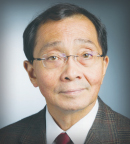Treatment with genetically engineered oncolytic herpes simplex virus type 1 (HSV-1) G207 alone or with radiation resulted in encouraging outcomes in a small study of pediatric patients with high-grade glioma. In a phase I trial, responses were observed in 11 of 12 children, and median overall survival was 120% higher than in historical reports.1 Four of the responders were still alive at 18 months, which is longer than the overall survival of 5.6 months in historical controls.
Of note, G207 alone or with radiation was associated with few toxicities, which has been a limitation of previous treatment options.
These results were presented at the virtual edition of the American Association for Cancer Research (AACR) Annual Meeting 2021 and published simultaneously in the The New England Journal of Medicine.2

“The toxicities associated with the current standard therapies [for pediatric high-grade gliomas] are unacceptably high. There is, therefore, a great need for effective and less toxic targeted therapies for children.”— Gregory K. Friedman, MD
Tweet this quote
“Outcomes for children with progressive gliomas are very poor, and we have not seen a significant improvement in outcomes for this dreadful disease in the past 30 years. The toxicities associated with the current standard therapies are unacceptably high. There is, therefore, a great need for effective and less toxic targeted therapies for children,” said lead author Gregory K. Friedman, MD, Professor of Pediatrics at the University of Alabama at Birmingham.
Converting ‘Cold’ Tumors to ‘Hot’
“We found that G207 alone and with radiation was associated with mainly low-grade toxic effects, with evidence of response in many of the children. G207 converted immunologically ‘cold’ tumors to ‘hot’ ones, with high numbers of infiltrating T cells and other inflammatory cells after treatment. To extend and confirm the findings of this phase I trial, a multi-institutional phase II clinical trial of G207 in pediatric high-grade glioma is forthcoming,” Dr. Friedman noted.
Malignant high-grade glioma accounts for > 15% of pediatric brain tumors, and the disease rapidly progresses to death. Newly diagnosed patients treated with standard radiation and chemotherapy have a 3-year event-free survival of 11% to 22%, and recurrent, progressive, pediatric, high-grade glioma has a median life expectancy of 5.6 months. For the rare child or adolescent who is cured, treatment with conventional therapies can injure the brain.
HSV-1 G207 was designed to overcome the limitations of conventional therapy, including the inability to convert immunologically “cold” tumors to “hot” and the inability to cross the blood-brain barrier.
“Oncolytic HSV immunotherapy can overcome challenges to a successful immunotherapy for pediatric high-grade glioma,” Dr. Friedman stated.
HSV-1 is inoculated intratumorally, overcoming the limitation of crossing the blood-brain barrier. After inoculation, the virus attaches and enters tumor cells. “The virus can infect a wide variety of pediatric brain tumors, which -overcomes tumor heterogeneity,” he explained.
With deletions of specific genes by genetic engineering, the virus prevents replication in normal cells but is able to replicate in cancer cells.
Study Details and Results
From 2016 to 2020, the phase I study enrolled 12 eligible patients (aged 7 to 18 years) with progressive or supratentorial high-grade glioma (10 with glioblastoma, 1 with anaplastic astrocytoma, and 1 with a high-grade glioma not otherwise specified). All brain tumors progressed after surgery, radiotherapy, or chemotherapy.
All tumors were IDH wild-type and did not have favorable genetic signatures. Ten of the tumors were large, three had multifocal spread, and one had leptomeningeal spread. A total of 75% (8 of 12 patients) had two or more prior lines of therapy, and 25% (4 of 12 patients) received at least three lines of prior therapy.
“Oncolytic HSV immunotherapy can overcome challenges to a successful immunotherapy for pediatric high-grade glioma.”— Gregory K. Friedman, MD
Tweet this quote
G207 was delivered in a 3+3 design with four dose cohorts. Patients underwent stereotactic placement of up to four intratumoral catheters. Infusion was delivered by rate control over a period of 6 hours. Cohorts 3 and 4 also received radiation (5 Gy) to the gross tumor volume within 24 hours of G207 administration.
No grade 3 or 4 toxicities were associated with G207, including at the highest planned dose. Of the 12 patients, 11 had at least one adverse event, possibly related to G207, but all 20 events were grade 1. Adverse events included diarrhea, nausea and vomiting, chills, fatigue, fever, anorexia, dizziness, headache, seizure, and postoperative hemorrhage. No dose-limiting toxic effects or serious adverse events were attributed to G207 by the investigators.
Dr. Friedman noted that multiple locations in the brain were treated safely, including the frontal, parietal, temporal, and occipital lobes; thalamus; corpus callosum; and insula.
Radiographic, neuropathologic, or clinical responses were observed in 11 of 12 patients. Median overall survival of patients who received G207 was 12.2 months, which is more than double the 5.6 months in historical controls with recurrent high-grade glioma. After 18 months post treatment, 4 of 11 patients were alive.
No evidence of peripheral viral shedding was found.
“Most patients had a strong response to G207 alone or with radiation, despite many having been heavily pretreated and having large tumors,” Dr. Friedman told listeners. “These encouraging results will need to be confirmed in an upcoming phase II trial.”
Matched pre- and posttreatment tumor samples suggest an antitumor T-cell response, with large numbers of tumor-infiltrating lymphocytes induced by intratumoral G207 inoculation. Dr. Friedman noted that it wasn’t clear whether these lymphocytes represented a general inflammatory response or a specific response to virus or tumor antigens.
DISCLOSURE: Dr. Friedman receives support through contracts to UAB from Eli Lilly and Company, and Pfizer. Treovir, LLC provided the drug for the study free of charge.
REFERENCES
1. Friedman GK, Johnston JM, Bag AK, et al: Phase I immunovirotherapy trial of oncolytic HSV-1 G207 alone or combined with radiation in pediatric high-grade glioma. AACR Annual Meeting 2021. Abstract CT018. Presented April 10, 2021.
2. Friedman GK, Johnston JM, Bag AK, et al: Oncolytic HSV-1 G207 immunovirotherapy for pediatric high-grade glioma. N Engl J Med 384:1613-1622, 2021.


